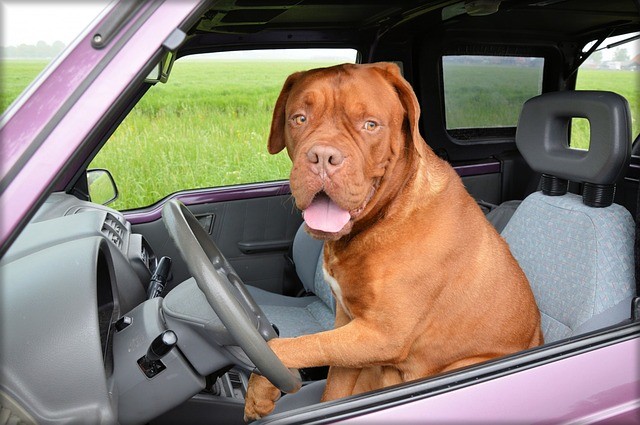Man can’t bear to leave his best friend behind. Whether they’re commuting to a dog-friendly office or joining us on a leisurely road trip this summer, we know our loyal canine companions are happier at our sides than pining at home. If you’re a dog guardian, you get it. The big, guilt-trip eyes after nipping to the corner shop; the tug at your heartstrings as your mutt bemoans the refusal of a seat at the dinner table; the (literally) warm and fuzzy feeling of curling up together on the couch. Life’s better with a sidekick. And at some point, your human friends have almost certainly accused you of treating this animal companion more like a baby than a dog.
This assertion is not without merit. Your dog does, in fact, have rather a lot in common with a toddler. They’re immeasurably cuter when seen through your eyes than they are to anyone else. They never cease to surprise you with the range of strange noises and smells they can produce. Most importantly, they rely on you to care for them where they cannot do so themselves.
Every spell of sunny weather sees a handful of shocking news stories scattered across the tabloids. It seems that the heat can get to dog owners’ heads all too quickly, causing them to overlook the responsibilities they have towards their animal companions. A dog can sustain brain damage or even die from heat stroke inside a hot vehicle within just 15 minutes.
Though it is not technically illegal to leave an animal in your car, it is illegal to mistreat or abuse an animal in your care. The Animal Welfare Act of 2006 deems leaving a dog in a hot car neglectful, meaning that you could receive a heavy fine for doing so. What’s more, if a dog suffers or dies as a result of being abandoned in an overheated motor, the guardian can be prosecuted for neglect or animal cruelty. These surely pale in comparison to the harshest punishment: living with the demise of an innocent animal lingering on your conscience.
Fortunately, it’s quite possible to put Rover in the Range without causing him undue distress. Here’s how to spot, treat and (preferably) prevent the dangers of heat stroke in your animal companion.
How to spot symptoms of heat stroke:

Unlike humans, dogs can’t sweat to cool themselves down. They deal with rising temperatures by panting. If your dog is panting heavily, with a fully open mouth or a swollen tongue hanging out to the side, this is a clear indicator of heat stroke.
Excessive drooling is another way dogs attempt to cool down; producing more saliva has a complementary effect to the action of panting. If your dog needs more frequent breaks to lie down, has a fast or irregular heartbeat or seems to have an unusually warm body temperature, they need to be treated fast.
Vomiting, diarrhoea, exhaustion or neurological symptoms (like stumbling, poor coordination and disorientation) indicate a severe case of heat stroke requiring immediate veterinary attention.
How to treat an overheated dog:

Simple treatments that you can perform yourself include getting your dog to lay down on a cool, wet towel; adding ice cubes to their water bowl; giving them a cool bath or allowing them to wade in a paddling pool; and moving to a shady place to rest. Be careful not to over-cool your animal companion: very cold or iced water can induce shock. The key to successful treatment is to rehydrate and calm your friend’s temperature gradually.
In the UK, if you see an unattended dog left in a warm car, call 999! The RSPCA and local vets have no powers of entry and can only provide assistance once the police have rescued an animal from the vehicle. If a dog’s life is in danger, know that you’re in danger of a court case for criminal damage if you break in without proper justification. When you call emergency services, be sure to state your intentions and why, plus take pictures or videos of the dog as evidence if you fear professional help may not arrive in time.
Preventative measures you can take:

Try not to leave your dog in the car at all, where possible. Weather conditions can change quickly, and your animal companion can become unwell within minutes of a sunny spell breaking up an otherwise overcast day.
The dangers of a warm day don’t end when your furry friend jumps out of the car, though: remember that concrete can reach temperatures of 60?C in summer, hot enough to cause permanent burn damage after just one minute of contact. Test the pavement with your hand before it touches a paw and steer clear of midday walks.
Always pay close attention to your dog; chances are if something’s wrong, they’ll try to communicate this to you. You know your animal companion best - it’s your job to decipher this dog-speak and relieve your friend’s discomfort as soon as you are able.